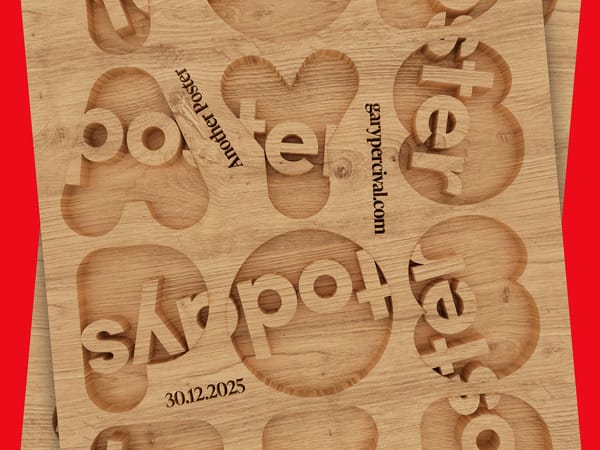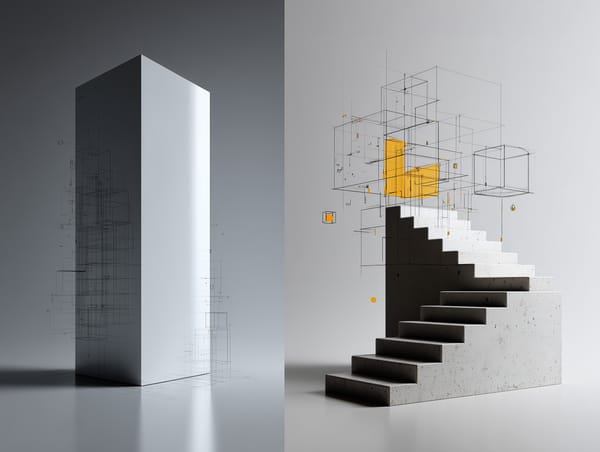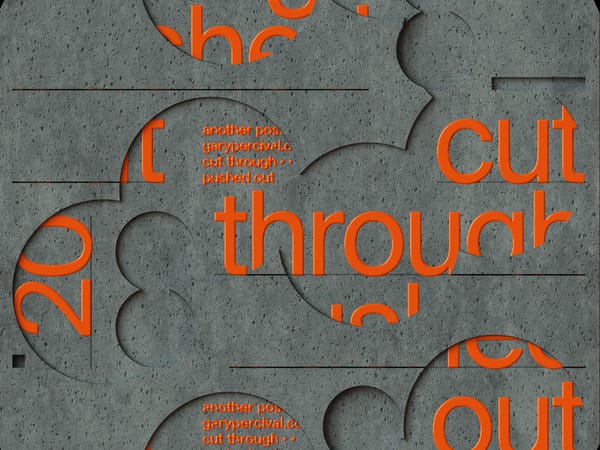Beyond the Fear: Finding Acceptance in the Age of AI
The AI revolution is no longer a distant dream; it is a reality already transforming the creative industry in profound ways.

Artificial intelligence (AI) has captivated our imaginations for decades, and recent technological advancements are bringing us ever closer to a future where AI is integral to our daily lives.
The creative industry, in particular, is experiencing a significant transformation. From graphic design and music composition to filmmaking and writing, AI is reshaping the way we create and enjoy content.
The Rise of AI in the Creative Industry
The integration of AI into the creative industry has now reached unprecedented levels. While companies have long used algorithms to analyse data for music playlists and movie recommendations, recent advancements have pushed AI capabilities far beyond these basic applications.
Transformer models and diffusion models are currently at the forefront of AI creativity, leading the way. Transformer models excel in understanding and generating human-like text, while diffusion models revolutionise image and video generation by iteratively refining random noise into coherent and highly detailed outputs.
These technologies enable AI to produce original pieces of art, music, and even interactive content that can be virtually indistinguishable from human creations.
This progress brings profound questions to the forefront about the future of human creativity. Will AI eventually replace human artists, or will it serve as a powerful tool to enhance and augment human creativity in ways we have yet to imagine?
As AI continues to evolve, it opens up new avenues for collaboration between humans and machines, promising a future where creativity knows no bounds. The symbiotic relationship between AI and human creativity has the potential to lead to groundbreaking innovations and push the limits of what we believe is possible.
However, as we embrace this new era of AI-driven creativity, it is crucial to address the fears and concerns that come with it. Many creatives fear machines will replace them, their livelihoods will disappear, and the value of their skills will decline. These fears are understandable, but they often stem from a limited understanding of AI's true potential.
Rather than viewing AI as a threat, we must recognise it as a tool that can enhance and complement human creativity. By focusing on the unique qualities that make us human—our emotions, experiences, and the ability to think critically and contextually—we can harness the power of AI to create even more meaningful and impactful works of art.
The Potential Benefits of AI in the Creative Industry
The benefits of AI in the creative industry are substantial.
AI can streamline and automate many tedious tasks that creatives often find burdensome, such as colour correction, image resizing, and audio mixing.
This automation frees up more time for creatives to focus on the core aspects of their work, like ideation and storytelling.
Another significant benefit is AI's ability to create personalised content at scale. By analysing vast amounts of data about individual users, AI can tailor content specifically to their interests and preferences.
This could lead to a future where every piece of content we consume is uniquely suited to our tastes and needs.
AI also democratises the creative process, making it more accessible to people without traditional artistic training. With AI-powered tools for graphic design and music composition, anyone can produce professional-quality content with minimal effort.
The Challenges and Risks of AI in the Creative Industry
Of course, the rise of AI in the creative industry comes with its own set of challenges and risks.
One major concern is the potential for AI to displace human creativity and lead to job losses. As AI becomes more capable of producing high-quality content independently, companies might rely more on AI and less on human talent.
Another concern is the possibility that AI will perpetuate existing biases and inequalities in the creative industry. If AI algorithms are trained on biased or unrepresentative data, they may generate content that reinforces harmful stereotypes or excludes certain groups.
There are also ethical questions to consider. For instance, if an AI creates a piece of music or art that becomes extremely popular, who owns the rights? Is it the programmer, the company, or the AI itself?
Moreover, the potential for deepfakes and other deceptive AI-generated content poses significant ethical and legal challenges. Ensuring the authenticity and integrity of creative works will become increasingly important as AI tools become more sophisticated and accessible.
As AI continues to integrate into the creative industry, we must address these complex questions and consider the impact on the perceived value of creative work, as well as the role of authenticity and originality.
Future of AI in the Creative Industry
Despite these challenges, the future of AI in the creative industry looks promising. As AI continues to evolve, we can expect even more impressive and transformative applications.
In the realm of virtual and augmented reality, AI will likely play a significant role. AI-powered tools could create immersive and interactive experiences that blur the lines between the real and the virtual.
Imagine stepping inside a painting to explore its world or interacting with movie characters as if they were real people.
AI is also poised to revolutionise entertainment and media, potentially creating new genres designed to engage and manipulate our emotions in profound ways as AI becomes better at understanding and replicating human emotions and behaviours.
Perhaps most exciting is AI's potential to help us push the boundaries of human creativity and imagination.
By analysing vast amounts of data and identifying patterns and connections that humans might miss, AI can help generate new ideas and insights.
In this way, AI could become a powerful collaborator and co-creator, allowing us to explore new frontiers of artistic expression and innovation.
Preparing for the AI Revolution
As the AI revolution continues, it's crucial for us in the creative industry to stay informed and adapt. This means investing in education and training to develop new skills related to AI and machine learning.
It also means being open to new ways of working and collaborating with AI tools and platforms.
Approaching AI integration with a critical eye and a commitment to ethical practices is essential. It is crucial to ensure transparency in AI use and to train AI algorithms on diverse and representative datasets.
Ultimately, thriving in the age of AI means embracing the technology as a tool to enhance human creativity rather than replace it. By working with AI in a spirit of collaboration and experimentation, creatives can unlock new possibilities for artistic expression and push the boundaries of what is possible.
Conclusion
The AI revolution is no longer a distant dream; it is a reality already transforming the creative industry in profound ways.
While there are challenges and risks to navigate, the potential benefits of AI for creatives are immense. By staying informed, adaptable, and committed to ethical practices, we can harness AI's power to create new forms of art, music, and media that inspire and engage audiences.
The future of creativity is here, and it is up to us to shape it in a way that benefits everyone.
The AI revolution is not just on the horizon; it is already here, and its impact on the creative industry will be swift and transformative. The pace and scale of this change are difficult to predict or fully comprehend.
As we navigate this uncharted territory, we can draw valuable lessons from past technological revolutions. History has shown that those who adapt, innovate, and embrace change are best positioned to thrive in the face of disruption.
The creative industry must do the same, finding ways to harness the power of AI while preserving the unique value of human creativity. In this new era of creativity, we can move beyond the fear and uncertainty surrounding AI and find acceptance. We must recognise that AI is not a replacement for human ingenuity but rather a powerful tool that can help us push the boundaries of what is possible and create works of art that resonate with audiences on a deeper level.



